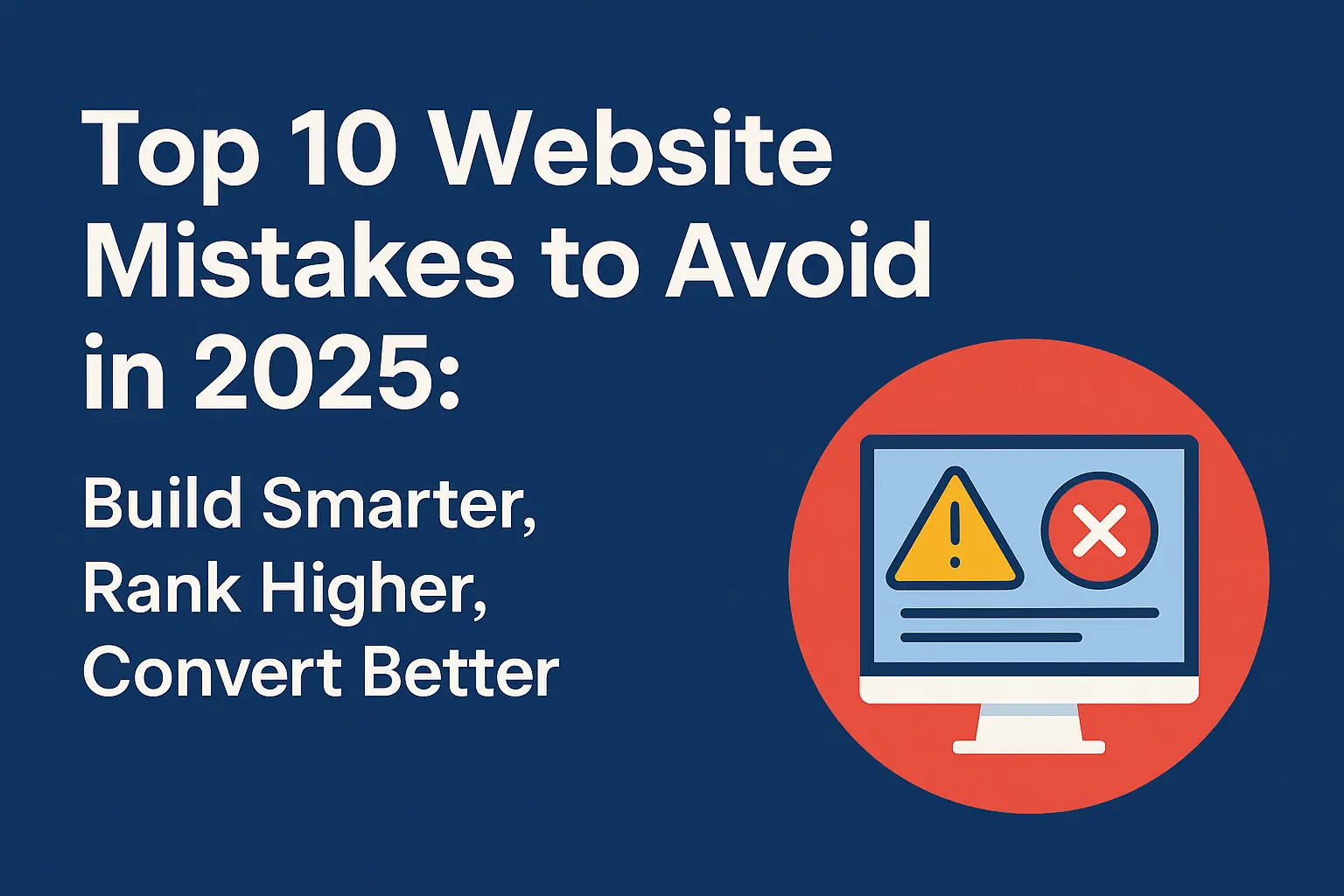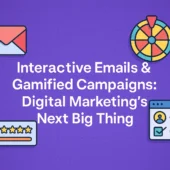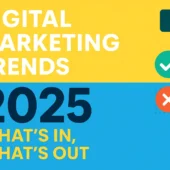By Junaid Imdad, Blogger & Digital Experience Strategist
Let’s get real: in 2025, having a business website isn’t just a nice-to-have; it’s essential for survival.
But here’s a little secret that most agencies won’t share: just having a website isn’t enough anymore. After collaborating with hundreds of businesses over the last five years, I can say with confidence that many websites fall short—not because their products or services lack value, but due to small, avoidable mistakes made during the development phase.
It’s not always about having a flashy design or the latest technology. Sometimes, it’s as simple as not having clear calls to action. Other times, it could be poor mobile responsiveness, slow loading times, or confusing navigation. And as we head into 2025, when users are more impatient and tech-savvy than ever, these seemingly minor oversights can really hurt you—we’re talking about lost traffic, fewer conversions, and a significant blow to your credibility.
So whether you’re a small business owner starting from scratch, a founder looking to refresh your site, or a marketer aiming to boost your brand’s online presence, this guide will help you navigate the most common (and costly) mistakes to steer clear of when building your business website—because a stunning website that no one can find or use isn’t doing your business any favors.
Common Business Website Mistakes to Avoid in 2025
In 2025, your website has evolved beyond being just a digital business card—it’s now the face of your brand, a lead magnet, and a trust builder all in one. However, many businesses still stumble over common website blunders that can quietly undermine their success. Issues like slow loading times, awkward mobile experiences, confusing menus, and weak or missing calls-to-action can easily frustrate visitors and drive them straight to your competitors.
Today’s users have sky-high expectations. They crave fast, smooth, and intuitive browsing experiences on any device. They want clear messaging, valuable content, and easy next steps. If your website falls short in these areas, it won’t matter how fantastic your product or service is.
To truly shine and convert in 2025, you need more than just an attractive design. You need a high-performing site that puts the user first—one that’s optimized for speed, clarity, mobile usability, and conversion. Steering clear of the most common pitfalls and aligning with what today’s users are looking for can make all the difference between a quick exit and a loyal customer.
1. Why Mobile-First Web Design Matters More Than Ever in 2025
In 2025, mobile isn’t just a passing trend—it’s the main way people are getting online. With more than 70% of web traffic projected to come from mobile devices, it’s pretty surprising how many websites still deliver a subpar experience on smartphones and tablets. I still stumble upon sites that take ages to load, are tricky to navigate, or force you to pinch and zoom endlessly just to read the content. It’s one of the most frequent and costly blunders businesses make: ignoring mobile responsiveness.
Just think about it—if your site doesn’t load quickly, fit well, or work smoothly on a smaller screen, users will leave before they even get a glimpse of what you have to offer. That’s potential customers, leads, and revenue slipping away in mere seconds.
In today’s digital world, having a mobile-optimized website isn’t just a nice-to-have—it’s a must. Making sure your design adjusts effortlessly to all screen sizes, with quick performance and easy navigation, is one of the smartest strategies to boost engagement, build trust, and keep users coming back for more.
Why it matters:
Google’s mobile-first indexing means your mobile version is what gets ranked. Poor mobile UX = poor SEO = lost customers.
Fix it:
Start with responsive design. Test on multiple devices. Use mobile-friendly navigation and keep forms short and clean.
2. Lack of Clear Website Goals Is the #1 Mistake Small Businesses Make
One of the most commonly overlooked aspects of web development? Establishing a clear purpose.
Far too many businesses jump straight into creating a website without first tackling a crucial question: What’s the main goal of this site? If you don’t have a solid set of objectives—whether it’s generating leads, boosting sales, building your brand’s authority, or assisting current customers—your website might end up being just an expensive digital brochure.
A website that lacks direction won’t make an impact.
If you’re not syncing your site’s design, content, and functionality with specific business goals, you’re really missing out on what it can achieve. Every button, page, and form should have a clear purpose. A well-thought-out website doesn’t just look appealing—it works diligently behind the scenes to foster growth, drive conversions, and enhance customer engagement.
Why it matters:
If your site’s goal is to generate leads, but all you’ve done is list your services like a digital brochure, you’re wasting potential.
Fix it:
Define your primary and secondary goals whether it’s bookings, signups, purchases, or calls. Then build your structure around those.
3. Why Ignoring SEO During Website Development Hurts Your Growth
SEO is not a feature, it’s a foundation. Too many businesses treat it as an afterthought and suffer low visibility later. Want to see Moz beginner guide to SEO, click on it
Why it matters:
Search traffic brings organic leads without ad spend. But poor site structure, slow speed, or missing meta tags are common business website mistakes that can severely limit your site’s visibility and growth. Fixing these foundational issues is key to unlocking consistent, high-quality traffic.
Fix it:
Involve an SEO expert early to avoid critical business website mistakes that can hurt visibility. Use keyword research to guide your page titles, URLs, and content structure. Don’t forget technical essentials like schema markup and image compression for better search performance and faster load times.
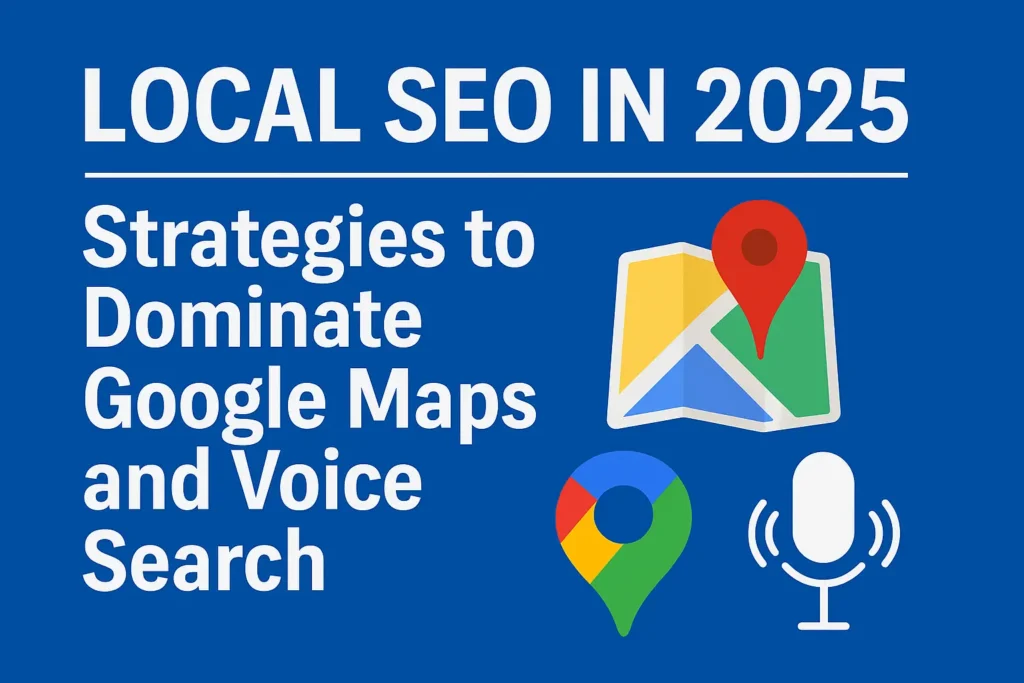
4. Choosing the Wrong Website Platform Can Cost You Time and Money
In 2025, the platform you choose for your website can either propel your digital growth or hold it back. With a plethora of options out there—like WordPress, Webflow, Shopify, Wix, and even custom-coded solutions—it’s easy to get lured in by the flashiest or cheapest choice and just go with it. But here’s the reality: picking the wrong platform is one of the most frequent (and expensive) blunders businesses make.
So, why is this such a big deal?
The platform you select impacts everything from how fast your site loads and how well it performs in search engines to how easily it can grow with your needs. If you choose poorly, you might find yourself facing frustrating limitations, costly redesigns, plummeting search rankings, or even needing a complete overhaul just a year or two down the line. Whether you’re running an online store, creating a content hub, or providing services, laying the right groundwork is essential for long-term success.
Why it matters:
One of the most overlooked business website mistakes is choosing a platform that doesn’t align with your business model. A local store needs entirely different tools than an e-commerce brand or a SaaS startup, and ignoring this can lead to wasted resources and functionality gaps.
Fix it:
One of the most common business website mistakes is blindly choosing a content management system (CMS) based on trends rather than strategy. It’s crucial to understand the strengths and limitations of each CMS whether it’s WordPress, Shopify, Webflow, or a custom build and choose the one that aligns with your long-term scalability, features, and audience needs.
5. Slow Website Speed? It’s Killing Your Conversions in 2025
Let’s be honest—if your website takes longer than 3 seconds to load, you’re already missing out on potential customers. In 2025, speed isn’t just a luxury; it’s a sign of trust. Users want instant access to information, and if your site is slow, they won’t hesitate to leave and find a competitor who values their time.
One of the most common (and easily avoidable) mistakes businesses make is not prioritizing performance from the get-go. Issues like uncompressed images, bloated code, poorly optimized videos, and an overload of third-party scripts might seem minor, but they quietly undermine your speed and, ultimately, your conversions. The outcome? A visually appealing website that performs poorly—and falls short in the metrics that truly count.
These days, speed isn’t just the developer’s responsibility; it’s a key part of your business strategy.
Why it matters:
Site speed plays a crucial role in everything from SEO and user experience (UX) to your conversion rates. In fact, Google’s Core Web Vitals—like Largest Contentful Paint, Cumulative Layout Shift, and First Input Delay—are now essential ranking factors. One of the biggest blunders businesses make with their websites is overlooking these performance metrics, which can lead to lower rankings, frustrated users, and ultimately, lost revenue.
Fix it:
Take advantage of tools like Google PageSpeed Insights, GTmetrix, or Lighthouse to check how well your site is performing. Make sure to compress those large images, enable lazy loading, and cut down on third-party scripts whenever you can. A lot of common mistakes on business websites come from overly complicated designs and unoptimized assets, but just a few small adjustments can lead to significant improvements in performance!
6. Weak Content Strategy = A Pretty Website That Fails to Convert
A stunning design is fantastic, but it won’t cut it if your content doesn’t resonate. One of the biggest blunders I’ve noticed on business websites is pouring all the energy into visuals while completely neglecting the message. I’ve seen some beautifully designed sites that look incredible but are packed with robotic, keyword-heavy text that lacks any real substance—and visitors can pick up on that right away.
In 2025, being genuine and clear will always triumph over jargon and fluff. People aren’t just browsing your site for eye-catching fonts or flashy animations—they’re searching for answers, a connection, and a reason to trust you. Your content should directly address your audience’s challenges, speak their language, and lead them toward taking action.
Great design captures attention. Great content holds it—and turns it into conversions.
Why it matters:
Your content is your voice. It builds trust, answers questions, and moves people to act.
Fix it:
Write like you talk clear, honest, human. Focus on value, not just visibility. Add testimonials, FAQs, and real stories.
7. Your Website’s Call-to-Action Buttons Aren’t Doing Their Job
One of the biggest mistakes businesses are making with their websites in 2025 is sticking to vague, outdated calls to action. Let’s be honest—phrases like “Contact us” or “Learn more” just don’t cut it anymore. You’d be amazed at how many websites still hide their CTAs at the bottom of the page, rely on generic wording, or, even worse, make users search for what to do next.
In our fast-paced digital landscape, your CTAs need to be front and center, crystal clear, and action-oriented. Think along the lines of “Get your free strategy call,” “Download your custom report,” or “Try it risk-free today.” These are the kinds of CTAs that truly resonate with user intent and help move them along the funnel.
Your website should be a guide, not a maze. Every click matters—so ensure you’re gently steering visitors with intention, rather than just hoping they’ll figure it out on their own. Because in 2025, a well-placed, high-converting CTA isn’t just a nice addition; it’s a powerful growth tool.
Why it matters:
People won’t take action unless you ask clearly and make it easy.
Fix it:
Use CTAs like “Get My Free Quote,” “Book a Demo,” or “Start Your Trial.” Position them at key points—top bar, mid-page, footer.

8. Skipping Accessibility? You’re Excluding 25% of Your Audience
Accessibility goes beyond just ticking boxes for compliance — it’s fundamentally about respect, inclusion, and doing what’s right. By 2025, having a website that leaves out users with disabilities isn’t merely a legal issue; it’s a lost chance to engage with a wider, valuable audience. Yet, many businesses still miss the mark on straightforward solutions like ensuring good color contrast, adding alt text for images, enabling keyboard navigation, and ensuring compatibility with screen readers.
Let’s be honest: accessible design is a win for everyone. It boosts usability, enhances your SEO, and casts your brand in a positive light. When your website is designed with all users in mind — no matter their abilities — you’re sending a powerful message: we genuinely care about your experience.
So, don’t treat accessibility as an afterthought or just another task to complete. Embrace it as a fundamental aspect of your user experience strategy — because by 2025, inclusivity won’t just be a nice-to-have; it will be a must.
Why it matters:
1 in 4 adults globally has a disability. Your website should be usable by everyone visually impaired, hearing impaired, or with motor limitations.
Fix it:
Use proper color contrast, alt text for images, keyboard navigation, and screen reader compatibility. Follow WCAG 2.2 standards.
9. No Trust Elements? Your Website Feels Like a Scam
In a world filled with AI-generated scams, deepfakes, and phony websites, trust isn’t just a nice-to-have — it’s absolutely essential. Nowadays, users are more skeptical than ever. They’re not just looking to browse your site; they want to feel a connection to it. If your website comes off as impersonal, sketchy, or outdated, visitors won’t stick around long enough to make a purchase.
That’s why modern web design needs to incorporate trust signals like:
- Genuine team photos or behind the-scenes glimpses
- Social proof, such as testimonials, reviews, and case studies
- Clear and accessible contact information
- SSL security and transparency about privacy
- Fresh content and an active social media presence
Trust is the currency of the internet in 2025. In a digital landscape where anyone can whip up a decent-looking site in no time, it’s authenticity that truly sets you apart. Show your audience that you’re real, human, and ready to help — or risk losing them to someone who does.
Why it matters:
Lack of trust can kill conversions. Visitors bounce if your site feels sketchy or anonymous.
Fix it:
Add SSL (https), visible contact info, customer reviews, badges (like “Secure Checkout”), team bios, and real photos not just stock images.
10. The “Set and Forget” Website Mistake You Can’t Afford in 2025
Launching your website isn’t the end, it’s the beginning. Yet some businesses “set and forget” their site for years.
Why it matters:
Markets change. Algorithms update. What worked last year might not work now.
Fix it:
Use tools like Google Analytics 4, Search Console, and Hotjar. Monitor traffic, bounce rate, conversions—and iterate often.
Bonus: Trying to Please Everyone Will Kill Your Website’s Effectiveness
One mistake I’ve seen often is trying to be everything for everyone. You end up with a cluttered mess.
Fix it:
Know your audience. Speak directly to them. Simplicity wins.
Final Thoughts: Build Smart, Not Just Beautiful
Your website is more than an online presence, it’s your business’s digital front door. A polished site that avoids these 10 mistakes isn’t just a good investment, it’s a competitive edge.
Want to know how much it will Top Mobile App Features in 2025, click on it.
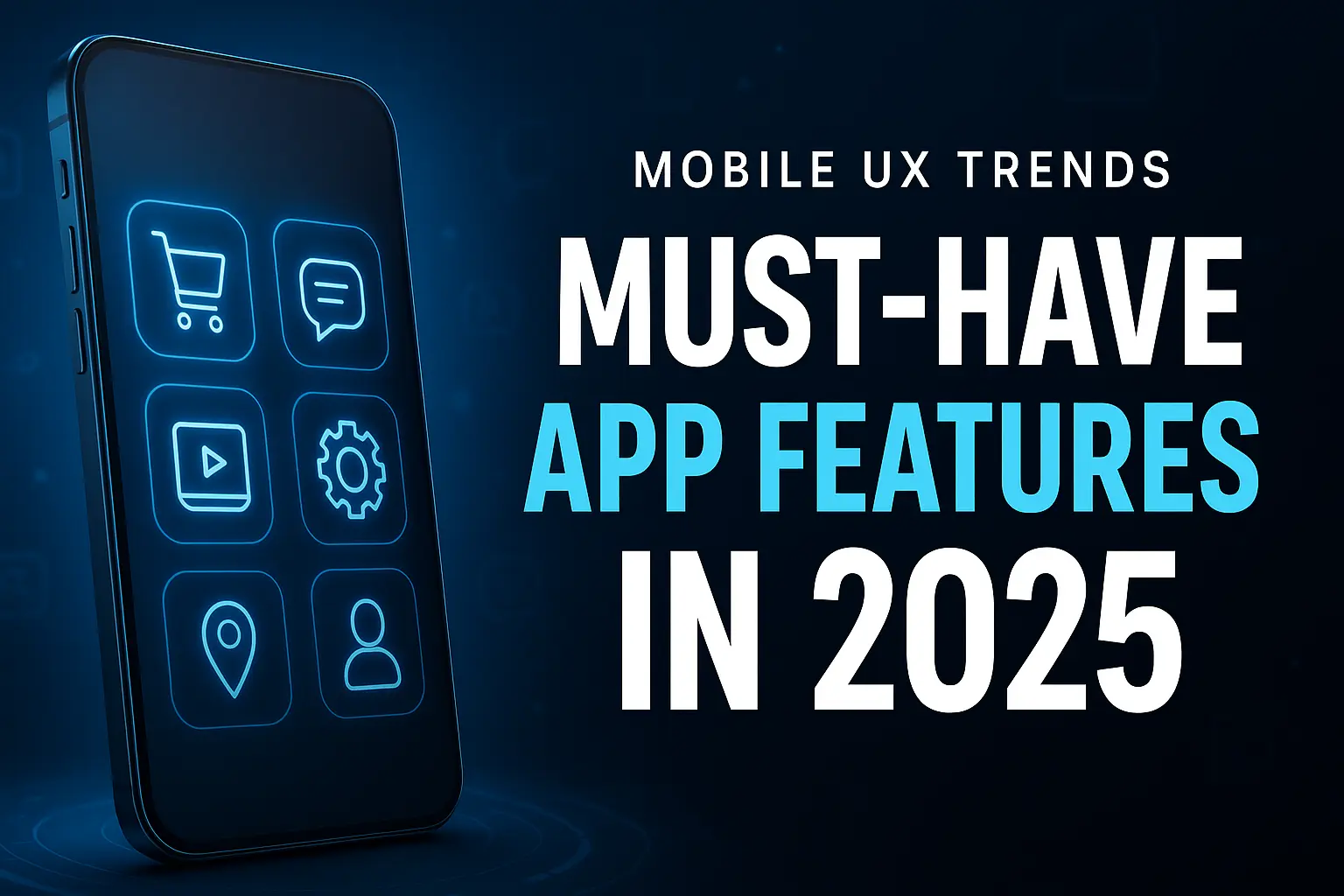
If you’re gearing up to design your website for 2025, make sure to prioritize strategy, speed, trust, and delivering real value to users. Remember, it’s all about creating a human-centered experience that drives results.
Need assistance with auditing your current site or planning a fresh redesign? Let’s chat! I’ve partnered with businesses from various industries to create websites that truly convert, rather than just sit there.
Junaid Imdad
Digital Experience Strategist | Blogger | SEO Consultant
Let’s talk on LinkedIn or schedule a website audit call.

